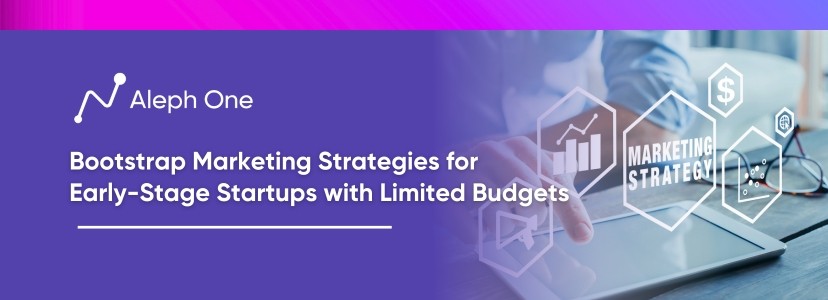Let’s work together to build something amazing. Share your project details and our team will reply to figure out the next steps to your success.

Market sizing is critical for startups seeking investment, as it demonstrates the potential for rapid growth and scale. Investors are constantly looking for the next unicorn, a startup with the potential to reach a billion-dollar valuation or more. By accurately estimating the size of the market opportunity, startups can showcase the potential upside if they capture a significant market share. Launching in massive markets, such as Uber disrupting the entire taxi and limousine industry or Airbnb targeting the global travel and tourism sector, has allowed successful startups to scale exponentially and become significant players in their respective industries. This article will go into market sizing for startups, unraveling the mysteries from TAM to SOM.

Why Market Sizing Matters for Startups
For startups seeking investment, market sizing is critical. Investors want to see your startup has rapid growth and scale potential. Demonstrating a significant market opportunity shows potential upside if your startup gains substantial market share.
The Benefits of Market Sizing
Market sizing also helps determine if a startup’s vision is realistic and viable. If the potential market is more significant, it will be easier for the startup to achieve sustainable growth at a venture scale. For example, a niche product targeting a total addressable market (TAM) of only $10 million in annual revenue is likely less attractive to most venture investors. On the other hand, a startup in a market with a TAM of $10 billion that can capture just 1% of the market in a few years has a far more compelling growth story.
Uber, Airbnb, & Salesforce – Disrupting Massive Markets
Many of the most successful startups today were launched in massive markets. Uber’s potential market includes the taxi and limousine industry, which generates over $100 billion in annual revenue globally. The demand for business software tools like Salesforce has nearly every B2B company worldwide. Airbnb’s market encompasses the global travel and tourism industry, representing over $1 trillion in economic activity annually.
For startup founders seeking investment, market sizing is essential. Defining and substantiating your TAM, SAM, and SOM allows investors to understand growth potential and envision a startup as the next unicorn.
Total Addressable Market (TAM): The Total Prize
Total Addressable Market or TAM represents the total revenue opportunity for your product if you capture 100% of the potential market. Calculating your TAM is a crucial first step in market sizing because it gives you and potential investors an idea of the maximum possible scale and upside for your business.
Comparing Top-Down and Bottom-Up TAM
There are two main approaches to determining your TAM: top-down and bottom-up. The top-down approach starts with a broad market, like “mobile gaming” or “enterprise cloud storage,” then estimates your potential share. The bottom-up approach combines multiple data sources to build up an estimate of your TAM.
For example, a top-down TAM for a mobile gaming startup could be:
Two billion global smartphone users spend an average of $20 per year on games = a $40 billion total mobile gaming market. If we capture just 2% of that over five years, our TAM is $400 million.
Bottom-up TAM Looks at Multiple Data Sources
There are 500 million hardcore mobile gamers globally. On average, hardcore gamers spend $50 per year on in-app purchases. Our unique game style appeals to about 50% of hardcore gamers. So our TAM is $12.5 billion if we capture 100% of those players.
Investors often view the bottom-up approach as more credible because it is grounded in factual data. However, both methods can be helpful, and it may be possible to reconcile their results.
TAM represents the total pie of revenue you could capture in a best-case scenario. Defining and substantiating your TAM is crucial for helping investors understand your startup’s long-term potential and possible high returns.
Serviceable Available Market (SAM): Your Realistic Market Potential
The Total Addressable Market (TAM) represents the total revenue opportunity for startup products if they capture 100% of the potential market. However, capturing an entire market is unrealistic for any startup. The Serviceable Available Market (SAM) is the portion of TAM that can serve based on factors like a startup’s business model, product capabilities, and geographic focus.
How to Determine SAM
To determine the SAM, one must make reasonable assumptions about the types of customers and geographies they can reach. For example, if an organization’s TAM is $50M across North America but only operates in the Western U.S., your SAM might be $20M. Or, if your product appeals mainly to enterprise clients, your SAM could be 60-70% of your broader TAM.
How Startups Can Effectively Expand Their SAM Over Time
Startups can effectively expand their SAM over time by entering new geographic markets, targeting new customer segments, enhancing product or service offerings, and building strategic partnerships. Strategies for doing so include setting achievable milestones, regularly reassessing and updating the startup’s SAM based on actual growth, and demonstrating the ability to win and serve new customer groups.
TAM and Upmarket Expansion
For example, a SaaS startup may initially target mid-market companies in a single country, giving it a SAM of $5-10M out of a $50M TAM. But after a few years of success, it expanded upmarket to large enterprises and other geographies, increasing its SAM to $30-40M based on a proven ability to win those customers. Its SAM may still represent just 60-80% of TAM due to specific customer segments remaining out of reach.
Investors will carefully evaluate SAM to determine if a startup can scale into a sizable portion of your broader TAM, even if the organization starts with a modest SAM. The key is articulating a logical growth plan for expanding SAM over the next several years based on achievable milestones.
Serviceable Obtainable Market (SOM): Your Immediate Opportunity
Serviceable Obtainable Market or SOM represents the portion SAM startups can realistically capture within the next 6-18 months based on current resources and capabilities. This is an essential market sizing metric for startups seeking investment because it allows investors to evaluate how much traction they can gain in the short term.
How to Determine SOM
To determine SOM, start with SAM and apply bottom-up assumptions based on sales funnel metrics. For example, if the SAM is $200M and the sales funnel suggests one can acquire 2,000 new customers in the next year, with an average contract value of $10,000, SOM would be $20M or 10% of SAM. The need to substantiate all assumptions using real data on website traffic, conversion rates, and customer acquisition costs.
Capturing SOM
The timeline for capturing SOM should be realistic based on how startups can scale their operations while maintaining good customer service and unit economics. For most startups, 6-18 months is an aggressive, achievable timeframe for gaining meaningful market share before raising additional investment. SOM does not represent a startup’s total market share in 6-18 months, but rather, the additional share one will gain on top of what they currently have.
Articulate a Compelling Vision
It is critical to articulate a compelling vision for how a startup will achieve their SOM through initiatives like ramping up marketing spend, expanding into new customer segments, building key partnerships, or enhancing their product. Investors will evaluate whether SOM seems feasible based on current positions and how much progress a startup can make with additional funding. The ability to gain significant traction towards SOM in the proposed timeframe will ultimately determine a startup’s success in raising follow-up investment.
Common Pitfalls to Avoid
Startups must often correct their market sizing, undermining their credibility with investors and setting unrealistic growth expectations. It is critical to avoid these common pitfalls:
Not Substantiating Assumptions
Only state numbers with factual data and analysis support them. For example, only state TAM is $50 billion by citing industry reports, bottom-up calculations based on pricing and customer segments, or other evidence to justify this claim. Investors will only find a startup’s estimates credible with evidence.
Using Unreliable Data Sources
To size the market, do not rely on speculation, anecdotal evidence, or vanity metrics. Use reputable third-party reports, verified market research, bottom-up analyses based on accurate data, and other authoritative sources. Unreliable data will mislead investors and undermine your business planning.
Not Defining a Realistic Timeline for Capturing Market Share
Startups should not claim they can capture a considerable portion of TAM within the next year without a compelling rationale for how quickly they will scale. Map the market share projections over the next 3-5 years based on current capabilities and resources, not unrealistic hockey stick growth. Investors want to see pragmatic growth plans, not fantasy.
Not Articulating a Compelling Market Thesis
Discuss the key drivers of growth in the startup’s target market, the competitive advantages, customer acquisition and growth strategies, key partnerships or channels, and other business plan elements that will fuel the business’s success. This context is essential for investors to evaluate opportunities.
Avoiding these pitfalls will make the market sizing and growth story more compelling to investors. Be transparent, conservative, and data-driven, and articulate a persuasive rationale to support market projections. This approach, combined with a realistic assessment of short-term SOM, will give investors confidence in the potential for scale.
Market Sizing in Action: Case Studies
A compelling example of adequate market sizing is Uber. When Uber first launched, its TAM was the total annual revenue of the taxi and limousine industry in the cities where it operated. Uber’s initial SAM focused on the revenue potential of disrupting private car services, a small fraction of the total ground transportation market. However, Uber articulated a vision to capture more TAM by disrupting car ownership.
Uber
Uber’s SOM and pitch too early investors centered around dominating the high-end private car service market in a single city – San Francisco. By proving their model in a small, concentrated market, Uber gained the means to expand into new cities and new customer segments. With each funding round, Uber presented an updated market sizing analysis showing how much of the TAM they had captured so far, their SAM based on current resources and planned expansions into new markets, and their SOM for the next 6-12 months based on a city-by-city plan to gain market share.
Airbnb TAM
Another example is Airbnb. Airbnb’s initial TAM was the global hotel and lodging industry. Their SAM focused on the small but fast-growing vacation and short-term rental market. Airbnb’s SOM and pitch too early investors targeted the potential to become the dominant peer-to-peer marketplace for vacation rentals in key cities and leisure destinations. They gained traction and investment by articulating a strategy to capture supply and demand in concentrated markets before expanding globally.
Airbnb Case Study – SOM
Like Uber, Airbnb presented investors with regular updates on their TAM, SAM, and SOM. With each funding round, Airbnb showed how much of the alternative accommodation market they had captured so far, their SAM for the next 3-5 years based on moving into new geographic markets and customer segments, and their SOM for the next 6-12 months based on a city-by-city plan to gain market share. Strong execution against these market sizing metrics allowed Airbnb to raise over $4 billion to capture more of its TAM.
These examples show how startups can evolve their market sizing analysis over time to gain investor interest and scale their business. By proving themselves in a concentrated market and articulating a vision for expansion, startups can build the means to capture greater market share and dominate their industry.
FAQ
What are the key differences between the top-down and bottom-up approaches to determining a startup's TAM?
The key differences between the top-down and bottom-up approaches to determining a startup’s TAM are that the top-down approach begins with a broad market and estimates the potential share, while the bottom-up approach combines multiple data sources to build an estimate of TAM. The bottom-up approach is often more credible because it is grounded in concrete data and built by considering multiple factors contributing to the startup’s TAM.
How can startups effectively expand their SAM over time as they grow and enter new markets?
Startups can expand their SAM over time by entering new geographic markets, targeting new customer segments, enhancing product or service offerings, and building strategic partnerships. Strategies include setting achievable milestones, regularly reassessing and updating the startup’s SAM based on actual growth, and demonstrating the ability to win and serve new customer groups.
What are best practices for startups to avoid common pitfalls associated with market sizing?
Best practices for startups to avoid common pitfalls associated with market sizing include substantiating assumptions with concrete data and analysis, using reliable data sources, defining a realistic timeline for capturing market share and articulating a compelling market thesis. Startups can ensure their market sizing approach is reliable, convincing, and data-driven by being transparent, conservative, and thorough in their analysis while presenting a compelling rationale for their market projections.
Get the latest news and updates from Aleph One in your inbox.



